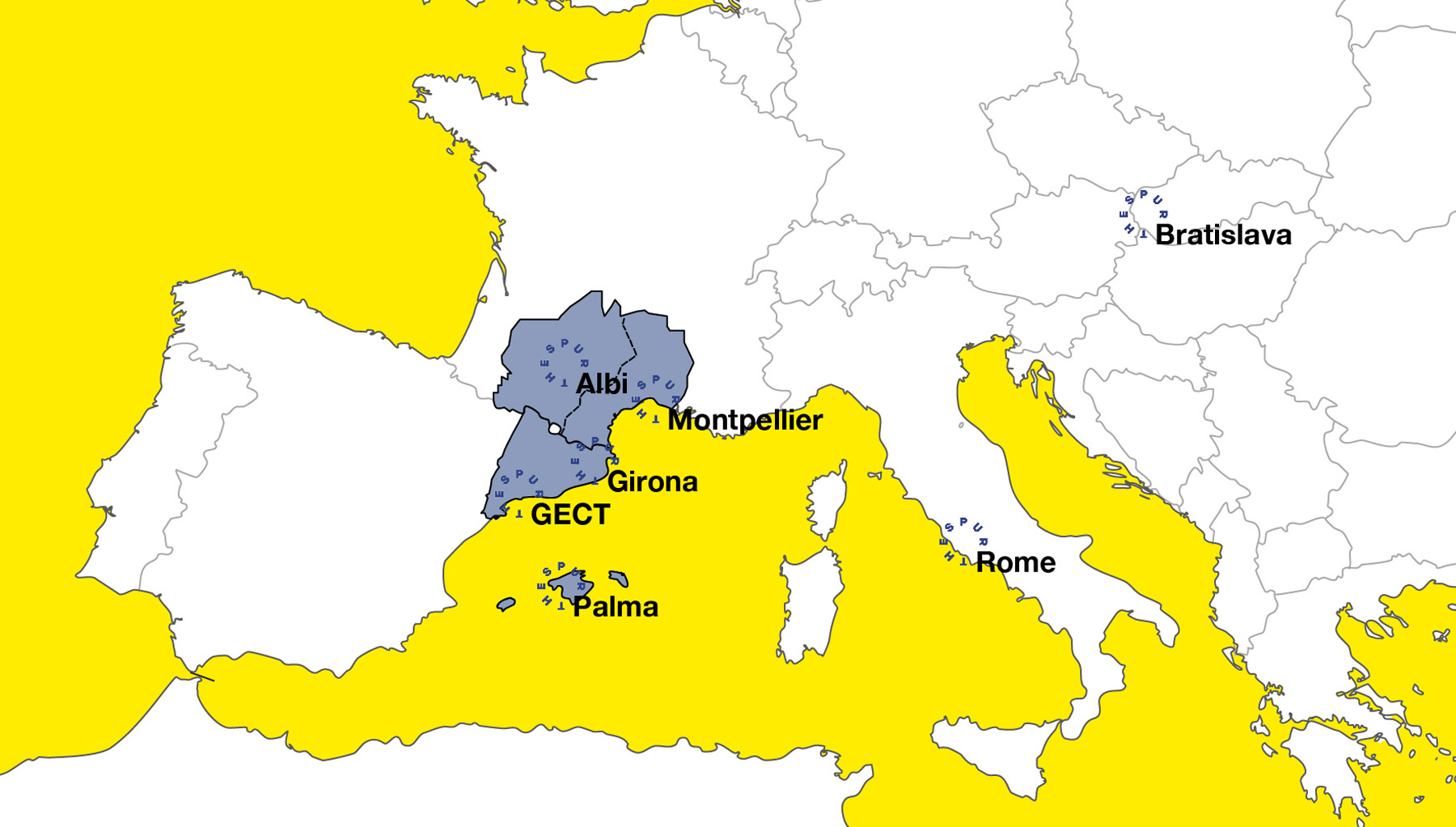The Euroregion Pyrenees Mediterranean is a territorial entity created as a political cooperation project that currently includes Catalonia, the Balearic Islands and Occitania region. Its objective is to create a pole of sustainable development through cooperation, prioritising innovation and social and economic integration within a working horizon of a united, supportive and approachable Europe.
Within the framework of The Spur, the role of the Euroregion has focused on taking advantage of its transnational nature and its experience in managing cooperation projects at a European level. This experience complements that of the project leader, Bòlit, Centre d’Art Contemporani. Girona, and another of the partners, Centre d’Art Le Lait, with whom the Euroregion had already had the opportunity to work with during the development of the artists’ residency project, ETAC (Crossborder Contemporary Art Space in its Catalan initials).
The ETAC, which received the Euroregion’s support for two consecutive years, took place during 2015 and 2016 and served to launch a Euroregional cooperation model that has been extended and expanded with The Spur. Therefore, the role of the Euroregion has been to act as a regional agent in the management of transnational projects. As such, it has been involved throughout the development of the project, carrying out management and coordination tasks and ensuring the proper implementation of the initiative in accordance with the set objectives and the quality, efficiency, effectiveness and transparency parameters, all of which are priorities for the Euroregion members.
As part of the activities of The Spur, the Euroregion has directly managed the communication office, with the close collaboration of the Bòlit, Centre d’Art Contemporani. Girona. The objective of this was to present the project to those in the creative arts world, visual arts professionals in the participating cities, and the general public.
The communication tasks have included the establishment of working methodologies, the approach of the communication plan and the coordination of activities with each of the partners. It should be noted that this activity has directly involved the work of all the partners, since all the centres are a means of communication in themselves, publicising the residencies, seminars and other activities of The Spur. In this regard, the Euroregion, in conjunction with the Bòlit, has carried out coordination and supervision tasks of this communication since the beginning. It has also encouraged partners to conduct local communication campaigns and has synchronised the entire transnational organisation into a cohesive voice, with a common image of the project and a shared idea of the messages being conveyed.
In the project, communication has been addressed as one of the tools for the professionalisation of artists and as a means of dissemination for those professionals who are already known internationally. It has also served to publicise the various events and highlight the work of the artists in residence, who have each had their own space on the website and whose work has been promoted on a continual basis.
Overall, the Euroregion’s role has joined together its managerial experience with it being a natural link between the various institutions, with the aim of promoting the cooperation needed to develop this project and reach the creative and artistic sector as a whole as well as the general public.
